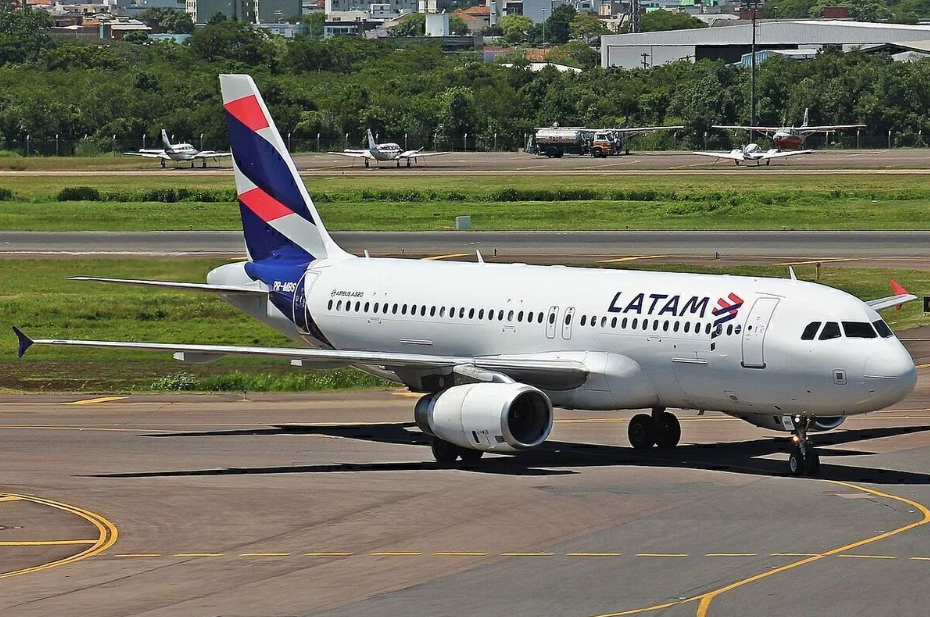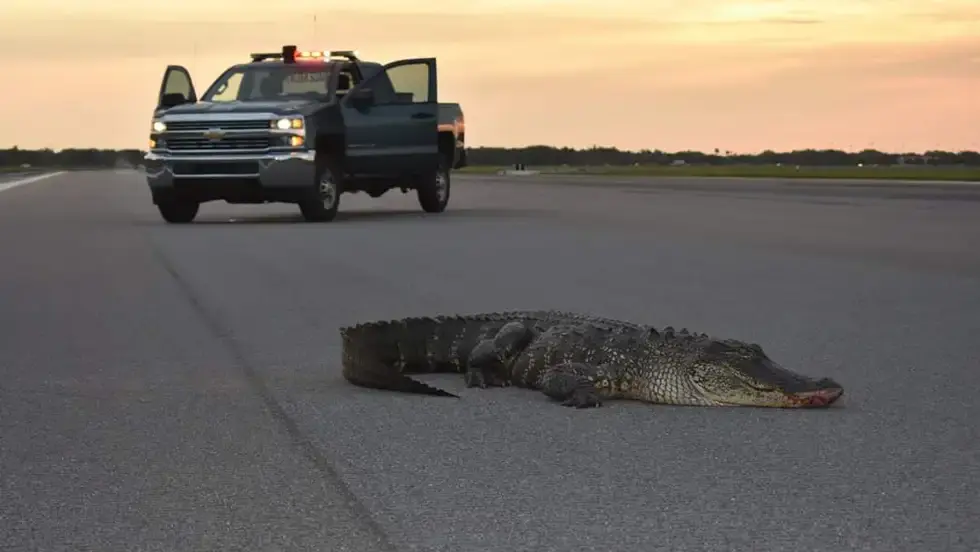We commonly associate birds with wildlife strikes involving aircraft. However, strikes can and do involve a wider variety of wildlife. While unexpected and unusual, these non-avian wildlife strikes surface the need for comprehensive wildlife management plans in aerodromes worldwide.

Check out our list of impressionable and unconventional strikes beyond birds and find out why it is important to mitigate risks posed by all sizes of animals.
Giraffe Strike in Botswana (2004)

A giraffe strike occurred at Santawani Airstrip near the Okavango Delta in Botswana in 2004. A Cessna 172 collided with the giraffe, causing significant damage to the plane and tragically resulting in the animal’s death. A researcher hit the giraffe while landing, fortunately surviving with only minor injuries. This rare occurrence highlighted the need for a robust wildlife management plan in regions where large terrestrial animals are prevalent. Such a plan could include more frequent surveys before aircraft movements, taller fencing, and effective habitat and vegetation management.
Cow Strike in Indonesia (2013)
In 2013, at Jalaluddin Airport on Indonesia's Sulawesi Island, three cows wandered onto the runway and collided with a Lion Air plane. The aircraft skidded off the runway into a field after hitting one of the cows. The pilot initially mistook the animals for dogs until he smelled burning meat and realized they were cows. Fortunately, all passengers survived, and two of the three cows did as well.

This incident underscores the importance of secure fencing and vigilant monitoring to prevent livestock from straying into critical areas. Effective stakeholder management is also crucial, as collaboration with local farmers, landowners, and regulatory authorities can help mitigate risks. Such occurrences can happen at any aerodrome in rural farmland areas, as seen with cow strike reports in other countries like India.
Moose Strike in Canada (2015)
On the morning of March 26, 2015, a Beech 1900 collided with a moose on the runway at Fort St. James Airstrip in British Columbia, Canada. The two pilots reported that, after touching down, the moose appeared from behind a snowbank, leaving them unable to lift off again in time. The moose, which seemed to be preparing to move, instead stopped in the middle of the runway. The impact was so severe that it unseated the right engine and broke off all the propellers. Fortunately, no one was injured—well, except for the moose, who unfortunately didn't make it.

The large size of moose, coupled with snow drifts that act as natural hiding spots, made this particular moose strike especially perilous. In this instance, the snow drifts effectively concealed the moose, allowing it to stay hidden until the very last moment. The moose unexpectedly wandered onto the runway, highlighting the unpredictable nature of such conditions and the need for increased vigilance and robust wildlife management strategies in snowy environments.
Kangaroo Strike in Australia (2020)
On January 14, 2020, Maitland Airport experienced a notable strike when a Beech 58 Baron collided with a mob of kangaroos, Australia’s largest land mammal, to the left of the runway. The aircraft skidded along the runway for approximately 150 meters, but fortunately, neither the pilot nor the passengers were injured, although the aircraft sustained significant damage to the nose landing gear, propellers, and lower fuselage.

Kangaroos, often found roaming in open fields, present an ongoing threat to aviation in Australia. Their tendency to move in groups and leap across runways creates a unique challenge for airports in regions where these animals are prevalent. This incident highlights the specific risks posed by wildlife in such areas and emphasizes the critical need for comprehensive wildlife management strategies to effectively address and mitigate these dangers.
Capybara Strike in Brazil (2021)

On January 7 2021, a capybara—a large rodent native to South America—was struck by a LATAM Brazil Airbus A320-200 while departing from Guarulhos International Airport in Sao Paulo, Brazil. A potential, but unassuming risk, the largest rodents in the world can reach heights of up to 62 cm and weigh as much as 66 kg. While not as large as giraffes or moose, a capybara strike can still inflict damage on an aircraft and lead to delays due to the need for runway cleanup. Such delays can result in costly disruptions for airlines.
Alligator Strike in the USA (2022)
A recent American alligator strike took place at Orlando International Airport in the United States in 2022, where a Spirit Airlines A-320 struck the alligator during an evening flight. Such incidents are not uncommon at Orlando International and other airports in Florida.

The Federal Aviation Administration's public database reveals over 30 American alligator strikes dating back to 1994, highlighting the ongoing challenges these airports face with alligator strikes. One of the most notable incidents occurred in 2017 at Orlando International Airport when a massive 225 kg alligator was struck.
Honorable Mention: Wasps in the Dominican Republic (1996)
While wasps and other insects hitting the body of a plane might not cause damage and pose little risk to an aircraft, there was a significant incident at Gregorio Luperón International Airport in the Dominican Republic in 1996. This was one of the first instances of insects bringing down a plane. How did this happen? Pitot tubes.

Wasps nested in one of the pitot tubes of Birgenair Flight 301, leading to a malfunction in the airspeed indicators. On February 6, 1996, the Boeing 757-200 crashed shortly after takeoff from Puerto Plata. All 189 people on board perished, making it the deadliest aviation accident in the Dominican Republic. The aircraft had been sitting unused for 20 days, and the pitot tube covers had not been in place preceding the crash. This incident highlights the need for diligent monitoring of even the smallest species that can infiltrate critical aircraft components.
Mitigating these risks requires a multifaceted approach that includes understanding local wildlife behaviour, continuous monitoring, and implementing both passive and active management techniques. Strategies such as secure fencing, habitat modification, and regular wildlife monitoring are essential to minimize animal presence near airfields and enhance safety.

댓글